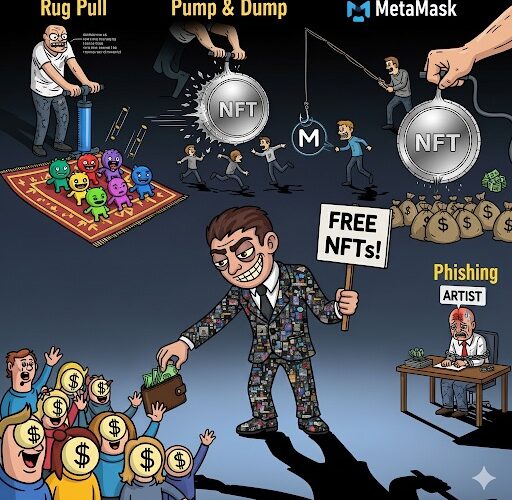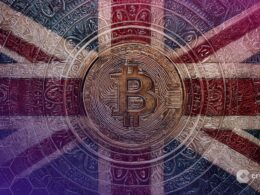The NFT market is expected to grow significantly in 2025, showing it has grown more stable since its early days. However, scams are still a major problem. NFT scams cost people a lot of money, with fake websites and phishing making up 31% of all crypto scams. While the market now focuses more on useful things like gaming NFTs (38% of all sales) and turning real-world items into digital tokens, scammers have changed their tricks to match.
The biggest new threat is AI-made fake videos and images. These deepfake scams jumped 900% between 2023 and 2025. Criminals now use artificial intelligence to create fake identities and copy famous people or project creators. They also use “crypto drainers” — harmful software that steals everything from cryptocurrency wallets — which helped these fraudsters take $2.2 billion from victims in 2024.
Phishing attacks are still the biggest danger, causing over 30% of NFT fraud cases. Scammers make fake copies of popular websites like OpenSea or pretend to be customer support on social media to steal wallet passwords. In August 2025, one major phishing attack stole $1 million worth of crypto and NFTs from people who clicked on fake links promising special buying opportunities.
Rug pulls have gotten more complex. Instead of simply running away with money, scammers now create fancy marketing campaigns using fake celebrity endorsements made with AI, then shut down their projects after making initial sales. The average rug pull now steals $300,000, while bigger operations can take millions before disappearing.
Fake NFT collections have become harder to spot because scammers use AI to create similar artwork and find ways around trademark rules. These copies often appear next to real projects on major selling platforms, making them hard to tell apart for regular buyers. Reports show that fake NFTs still make up a large portion of new tokens on less-watched platforms.
Free NFT scams and harmful smart contracts are growing threats. Scammers send free NFTs to random wallets, but these tokens contain hidden code that can steal everything from your wallet if you interact with them. These “ghost token scams” increased by 92% in 2024 and continue to spread across different blockchain networks.
Real NFT projects in 2025 usually have clear team members you can verify, active communities on multiple platforms, and clear plans for what their NFTs will actually do. Suspicious projects often have anonymous teams, fake social media followers created by AI bots, or pressure you to buy quickly with limited-time offers.
Because of fake identity fraud, even team profiles that look real might be AI-generated, so you need to check more carefully. Be careful of projects promising unrealistic profits, having no clear purpose beyond making money, or asking for unusual permissions when connecting your wallet. Also, any project using aggressive marketing on social media — which connects to 53% of crypto fraud cases — needs extra checking.
Checking projects carefully has become more important as scams get smarter. Always type marketplace web addresses yourself and verify official project links through multiple sources, including verified social media accounts and trusted NFT community groups. Use separate wallets for different activities — keep one “active” wallet for trading and a secure hardware wallet for long-term storage.
When dealing with smart contracts, be extra careful about what permissions you give. Before approving any transaction, carefully review what access you’re allowing. Many modern scams use contracts that keep accessing your wallet even after the first transaction. Use tools like Etherscan to check contract addresses and see recent transaction history before interacting with new systems.
Community checking has become essential as AI creates fake communities. Join project Discord or Telegram groups to see if the activity is real versus bot-driven. Real communities typically show natural discussion patterns, while fake communities often have repetitive messages or coordinated responses.
If you ever get scammed, the key is to act fast. Report fake projects to the marketplace hosting them, save all evidence including transaction records and messages, and warn community groups to protect others. For big losses, contact both local police and the FBI’s Internet Crime Complaint Center, since law enforcement now focuses more on crypto crimes.
While blockchain’s design makes getting money back hard, reporting quickly can sometimes help freeze stolen funds if scammers use regular exchanges to clean their money. Also, companies that analyze blockchain data now work with police to track stolen funds, making recovery more possible than before.
The NFT space offers real value and innovation, from gaming uses to turning physical items into digital tokens, but it’s still targeted by smart scammers. As AI tools make fraud more convincing and easier to scale up, buyers must carefully check projects, use proper security tools, and stay informed about new threats. The secret to safely participating in NFTs is staying skeptical while using the security tools and community resources available to modern collectors and creators.
What percentage of NFTs are fake or scams in 2025?
While exact numbers vary by platform, reports show that less-regulated marketplaces still have significant fake activity, though major platforms like OpenSea have improved their checking systems. The key is buying only from verified collections on established marketplaces.
How can I tell if an NFT project is using AI-made fake endorsements?
Look for problems in video quality, unnatural face movements, or voices that don’t match previous content from the claimed person. Double-check endorsements with official social media accounts and be suspicious of celebrity endorsements that seem too good to be true.
Are free NFT airdrops ever real?
Yes, but be very careful. Real projects sometimes give away free NFTs, but never interact with unexpected NFTs in your wallet. Research the sending address and project thoroughly before engaging, and never approve contracts for unknown tokens.






